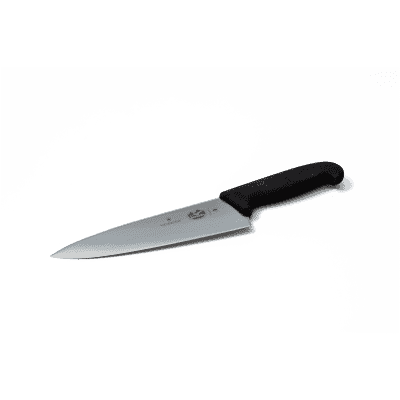Isn’t cooking a ham remarkably simple? You just throw it in the oven, slather on some glaze, and wait. But this approach can often yield inferior results—dried-out, leathery meat that tastes like salty jerky with a sticky, saccharine exterior. Ideally, ham is moist and tender and the glaze complements but doesn’t overwhelm the meat. We’ve cooked hundreds of hams in the test kitchen over the years and have had our share of disasters. We decided to reexamine this topic to learn what really works—and what doesn’t.
Holiday Ham 101
Published Nov. 1, 2007.

In most supermarkets, cured hams come in five forms: boneless, semiboneless, bone-in, whole, and half. Each of these types is available unsliced or presliced (often labeled “spiral-sliced”). After cooking up each in the test kitchen, we clearly favored bone-in hams that had been spiral-sliced, since they offered the best flavor with the least amount of postcooking carving. As a rule of thumb, you should allow about 1/2 pound of ham per person. This takes into consideration any weight lost during cooking as well as the weight of the bone. Unless you are feeding a very large crowd, we recommend a half ham.
With all hams, it is important to read the label. Typically, supermarket hams are wet-cured, a process that involves soaking the ham in brine. During this process, the ham will absorb water and gain weight. Not surprisingly, we found hams that gained the least water weight (labeled “ham with natural juices”) taste the best. Avoid labels that read “ham with water added” or “ham and water products.”
Whole ham is the entire leg of the animal. Half hams are available in two distinct cuts: shank end (the bottom part of the leg) and sirloin end (the portion of the leg closer to the rump). If labeling is unclear, it’s easy to identify half hams by their shape—shank hams have a pointed end much smaller than the larger end, whereas the sirloin (or butt) end is rounded. In the past, we have recommended the shank end for ease of carving, since the bone is relatively straight compared with the odder-shaped bones in the sirloin end. However, in our most recent round of tastings, we found the sirloin end to be meatier and less fatty. If you’re up for a slightly more challenging carving job, the larger sirloin end will not disappoint.
There is nothing you have to do to serve a cured and cooked ham other than cut it off the bone. When ham is the centerpiece of a holiday dinner, however, most people prefer to have it served warm, and often with a glaze. After roasting many hams to temperatures ranging from 100 to 160 degrees, we found the ideal temperature to be between 110 and 120 degrees. This was enough to take the chill off the meat without drying it out. Cooking the ham to a higher internal temperature (as many sources suggest) guarantees dry meat.
Most recipes cook the ham at 350 degrees, so by the time the center finally comes up to temperature, the exterior is parched. We roast ham in a 250-degree oven, which lessens the temperature differential between the exterior and the interior. Also, rather than starting with an ice-cold ham, we found that we could cut oven time (and thus drying) by leaving the ham at room temperature for 90 minutes prior to cooking. But could we do even better? Soaking the ham in warm water for 90 minutes raises the temperature considerably and cuts oven time by a full hour. Finally, we’ve discovered that roasting the ham in an oven bag reduces roasting time even further. (The bag speeds cooking by providing insulation.) Compared with a cold ham shoved into a 350-degree oven, our method reduces moisture loss in a 10-pound ham by 50 percent.
We’ve found that oven bags produce the moistest ham in the least amount of time. If unavailable, aluminum foil will work, but you will have to add three to four minutes of cooking time per pound of meat (between 21 and 40 minutes for a 7- to 10-pound ham). Remember, less oven time means a moister ham.
Almost all spiral hams come with a packet of premixed glaze and instructions to brush it on the ham while cooking. Glaze is a good idea, but the stuff in the packets tastes awful. Take 10 minutes to make your own glaze. Since we cook ham inside an oven bag, we needed to figure out a new approach to glazing. Once the internal temperature of the ham reaches 100 degrees, cut open the bag and increase the oven temperature to 350 degrees. Apply the glaze and bake the ham for 10 minutes. Remove the ham from the oven, apply more glaze, and then make a quick sauce with the remaining glaze and the drippings in the oven bag.
We’ve found that a 15-minute rest allows the internal temperature to increase by 5 to 15 degrees, which allows us to bake the ham less in order to reach the ideal serving temperature of 110 to 120 degrees. (Cover the ham with foil as it rests.)




